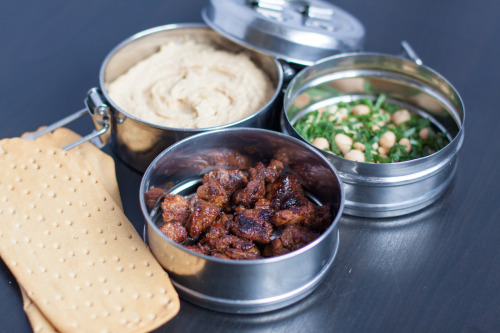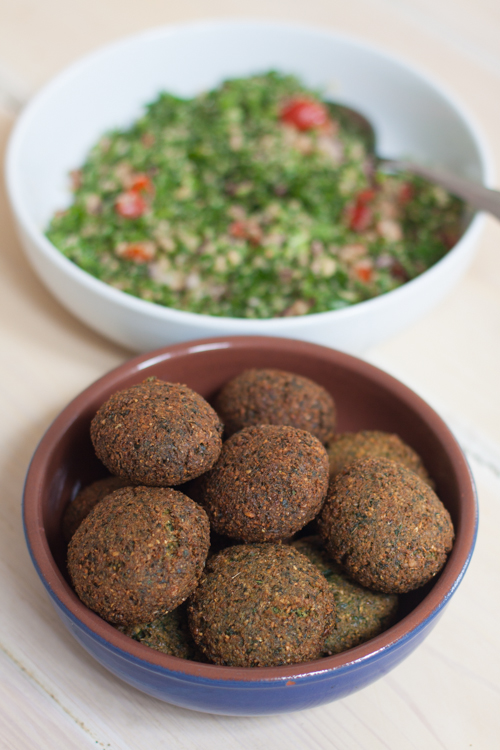Hummus with spiced lamb and pine nuts
 Wednesday, April 6, 2016 at 9:11PM
Wednesday, April 6, 2016 at 9:11PM The new series I am writing for Borough Market, Box Clever, is encouraging me to be much more adventurous with my packed lunches and how I pack them. Don’t you just love these Indian tiffin tins? I bought them for pretty pictures, but I find I am using them all the time.

I first tried this dish in a little family-run Lebanese restaurant called Emma’s on Liberty in Enmore, Sydney. They called it “traditional houmous” but it was so much better than any hummus I’d tried before. It did make me wonder why I’d been eating the unadorned version my whole life. Never again.
The dish is more often called hummus kawarma or hummus b’lahmeh, both of which mean hummus with lamb, but I am sure there are many other names to match the myriad recipes. There are almost as many versions of this dish throughout the Middle East as there are recipes for hummus. Chopped lamb or minced? Pine nuts or pomegranate seeds? Chunky or smooth? Tahini? Herbs? Spices? It depends who you ask.
 Aleppo pepper,
Aleppo pepper,  chickpeas,
chickpeas,  cumin,
cumin,  garlic,
garlic,  lamb,
lamb,  pine nuts,
pine nuts,  pomegranate molasses in
pomegranate molasses in  Canapes, mezze & tapas Tweet
Canapes, mezze & tapas Tweet 

